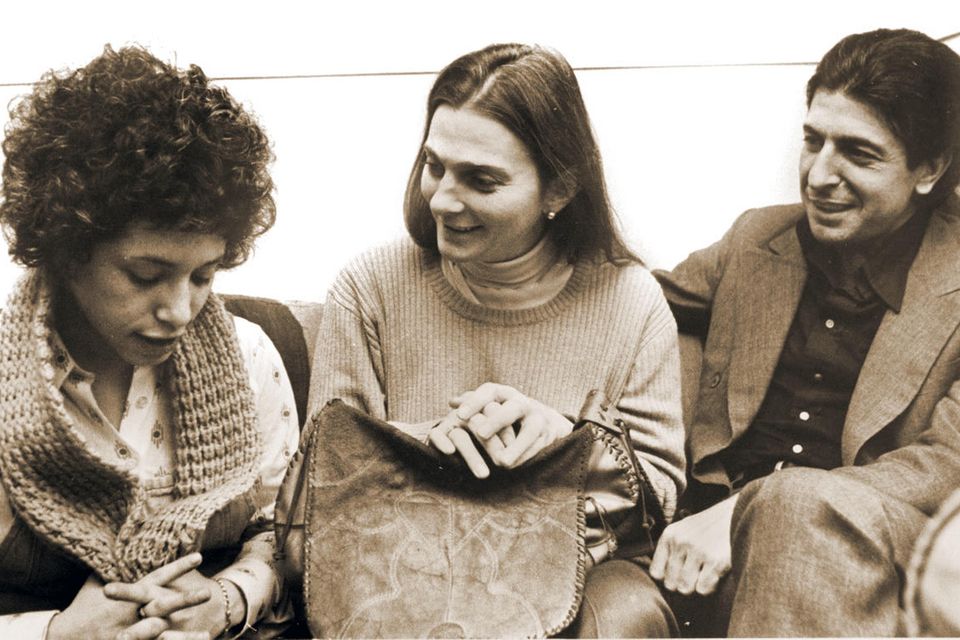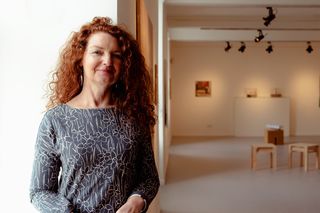Janis Ian: ‘Cocaine could have become my drug of choice’
The legendary singer-songwriter talks about hanging out with Hendrix, racism, her wife Patricia, and making her ‘final’ album



Janis Ian’s self-titled debut in 1967 could very well have been her last album. At that time, the singer-songwriter, only 16 years of age, was hanging out with another Janis – Joplin – and Jimi Hendrix. And both rock stars had an appetite for excess.
One night, Joplin sent her home from a party where drugs were being used. Another time, when she visited Hendrix in LA, he produced a bag of cocaine. For weeks, she had been hounding him to let her try cocaine. That night, he gave in…
Not long after taking the drug, she became suddenly quite ill. Slumped against the wall of the studio, she slid onto the floor.
“Girl, your face is so white,” Hendrix said, helping her up. “I can see right through it.”
They didn’t want to call an ambulance for fear they’d end up in jail. Mercifully, she recovered.
“Years later, I discovered I was allergic to vasoconstrictors, and anything with speed in it. That was lucky for me – because cocaine could easily have become my drug of choice.
“I’d have loved the extra energy, the sense of power, and I’d have ended up like so many of my friends, strung out or even dead,” she wrote in her Grammy-winning autobiography, Society’s Child. She’s referring to Hendrix, who died in 1970, aged 27, of asphyxia, while intoxicated with barbiturates, and Joplin who also died that year, aged 27, of a suspected heroin overdose.
Janis Ian in 1973 with Bruce Springsteen, Billy Joel and DJ Ed Sciaky. Picture by Peter Cunningham
Ian will release her last-ever solo album on January 22. “It is a final statement,” she says of The Light at the End of the Line. “It is all I have learned.”
That acquired knowledge is there in abundance on a record that she says is about the need for less in life.
“It is like getting older,” says the 70-year-old. “You don’t move as well, and you don’t maybe think as rapidly – but it becomes very much less is more. You don’t need as much. You don’t need as many things. You don’t need as many acquaintances. You don’t require as much to feel like yourself because it is already there.
“So, on this album, more than any other, there are a lot of silent moments.”
The song ‘Stranger’ – about being a refugee, because her grandparents escaped the “pogroms in Russia and were shot at” – has very few vocals. “I tried very hard to say only what was necessary.”
Born Janis Eddy Fink on April 7, 1951, she spent her early years in New Jersey. “It’s an outcast state. The goal of being from New Jersey was to get out of New Jersey.”
It was on her father’s chicken farm in Farmingdale that she began playing piano at age two and a half. She had watched her father on the piano and imitated him. “I learned piano, and made that my life.” She was soon playing French horn and trumpet too. By the time she was nine she had mastered her father’s guitar and was writing songs.
Janis in 1974 with Judy Collins and Leonard Cohen
At 13, having had the song ‘Hair of Spun Gold’ published in the folk magazine Broadside, she was invited to the publication’s ‘Hootenanny’ event in Greenwich Village. She was a minor revelation.
She took her brother’s middle name, Ian, and became Janis Ian. Singer-songwriters Joan Baez and Bob Dylan both had eight letters in their names and that influenced her decision.
In 1965, the 14-year-old was inspired to write ‘Society’s Child’ – one of the most potent songs of the civil rights era in America – by what she saw on a bus in New Jersey: a black boy and a white girl holding hands.
“People were upset about it. But black boys and white girls were holding hands all over America. Love conquers. Love will out, whether it was legal or not. It was kind of like being gay,” says Ian, who has been with her partner Patricia since 1989.
“You might get the impression from the Stonewall riots that the only gay people in America were in San Francisco and New York. But clearly, we were everywhere – and whether it was illegal or not, you still fall in love with who you fall in love with.
“I always knew I was attracted to women,” she says. “I didn’t think about it until fourth grade. That is nine years old. It was always clear to me.”
Equally clear was her mother when she told her at the age of 11: “You should be in love with anyone you give yourself to.”
“I said to my mom once: ‘You told me not to sleep with anyone you didn’t love – you didn’t specify the sex.’
A poster of one of Janis Ian's concerts in 1967 when she was supported by The Doors
Religion wasn’t an oppressive force for Ian growing up in 1950s America.
“Not for me, because we were Jews,” she says. “So I never inherited any of the guilt. We believed it was about your weight on the scales and everything you’ve done is weighed. So a last-minute repentance doesn’t really do you much good, if have lived the rest of your life as a war-mongering fascist pig.”
Did she ever suffer antisemitism growing up?
“Very little, compared to what my parents went through. There was a couple of incidents. There was a girl in sixth grade who kept calling me ‘Christ killer’. And my mother taught me how to throw a punch. I punched her where my mother told me to. And she never bothered me again.”
At 15, she moved to New York where she was able see the artists in concert who she’d previously heard on records or on the radio, like Odetta and Nina Simone. She started to play venues such as Greenwich Village’s Gaslight Café and in 1966, she was signed by Verve Records who released ‘Society’s Child’ as a single.
Because of its subject matter, the song was banned on many radio stations. She received hate mail, and was verbally abused on the street – but ‘Society’s Child’ earned her a Grammy nomination for Best Folk Performance
With the release of her first album, she became a star with a social conscience. On the night of April 4, 1968, she was at a BB King concert with her friend Jimi Hendrix when she heard the news that Martin Luther King had been gunned down in Memphis. In the late 1960s, through intense pressures of her work, fame and touring schedule compounded by the break-up of her parents’ marriage, she suffered a nervous breakdown. When she was 18, she attempted suicide.
In the early 1970s, she signed to Columbia Records and in 1974 released the Stars album. Two years later, she won a Grammy for her song ‘At Seventeen’. It became her signature tune and was later recorded by the likes of Aretha Franklin, Ella Fitzgerald, Celine Dion and Barbra Streisand. After hearing it, Tennessee Williams said: “I could sense pages turning and lives changing.”
Janis Ian
In the early 1980s, Ian’s life was doing just that. She stopped recording to study with acting teacher Stella Alder for 10 years.
She went to Adler (whose past pupils included Marlon Brando) originally to learn more about movement and the art of being on the stage. “But I ended up really learning how to be an artist in a way that I hadn’t understood before.
“Stella gave me words for things I felt but didn’t even know I felt. I met her when I was 33 and she was 83. We were close friends until she died.”
Adler’s influence could be felt on Ian’s so-called comeback album Breaking Silence released on January 1, 1993. “She taught me not to be obsessed with myself. To create a lyric that didn’t waste anything.”
That teaching is evident on the pared-back simplicity of her new album.
“Stella used to say to me: ‘What is this fabulous ‘I’ you are always talking about? What is that in the scope of humanity?’ And if I look at song-writing – which you could argue has existed since the first story was told – this is a blip on the radar.”
Janis and Patricia (who she describes as “smart, funny, patient”) married in 2003 and live near Tampa Bay in Florida.
"We don’t go out much, especially since Covid,” she says. “I have a really quiet home life. Get up early, at work by 7am, try to knock off by 4pm.
“If I was 30 or 40 years younger, I might have moved to Ireland,” she adds wistfully. “In Ireland they can keep a tune. I have never heard ‘Seventeen’ harmonised, except in Ireland.”
Does she have any specific memory of Ireland?
“I remember my first visit to a pub in Dublin in 1974. There was an older woman – she was probably younger than I am now – who was singing, and everyone was listening raptly. Then they all joined in on the choruses.
“It was wonderful, because she didn’t have a great voice, but she sang with great passion.”
Janis Ian’s ‘The Light At The End of The Line’ is out on January 21. For more information, see www.janisian.com
Join the Irish Independent WhatsApp channel
Stay up to date with all the latest news




















